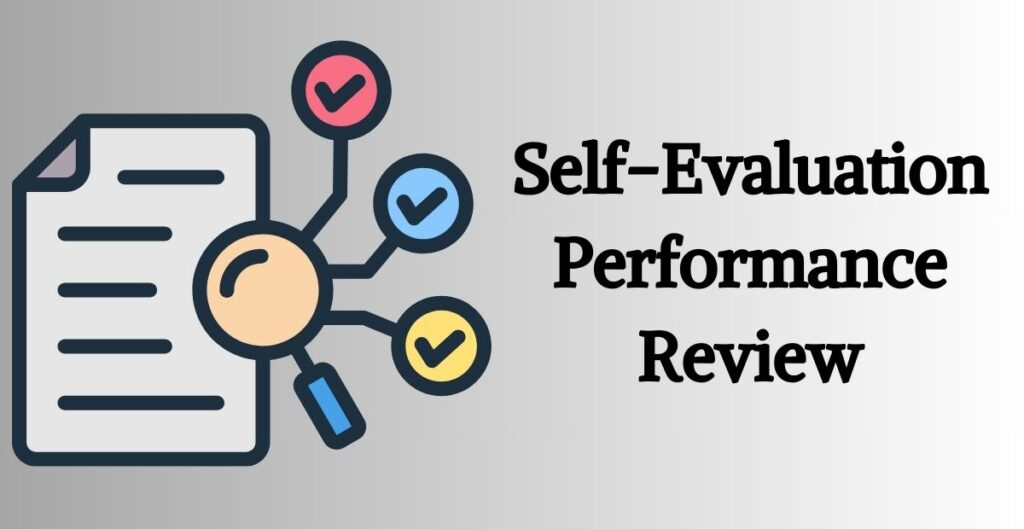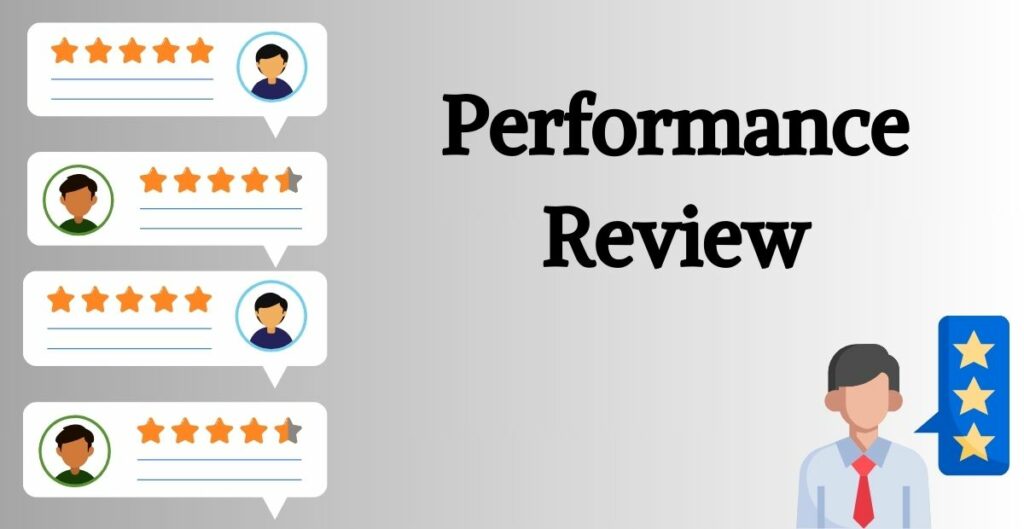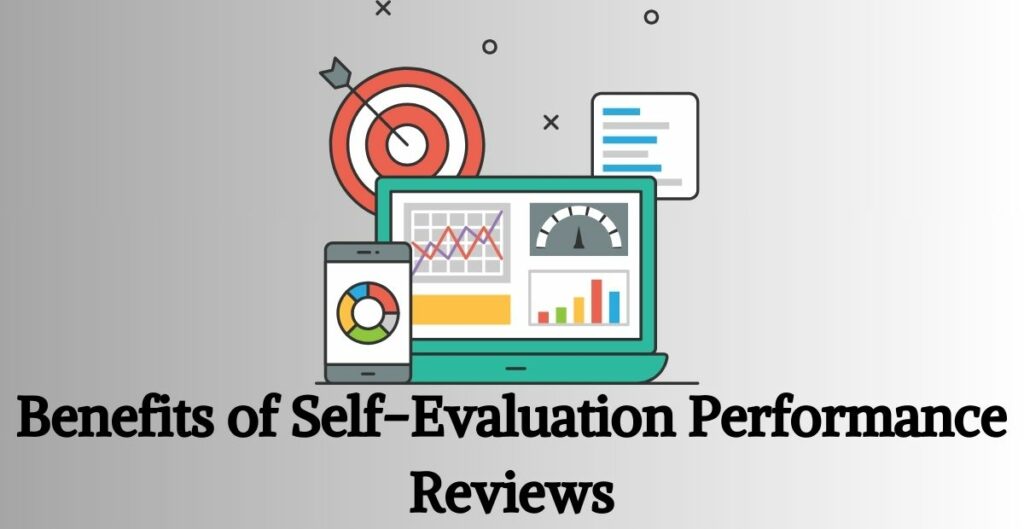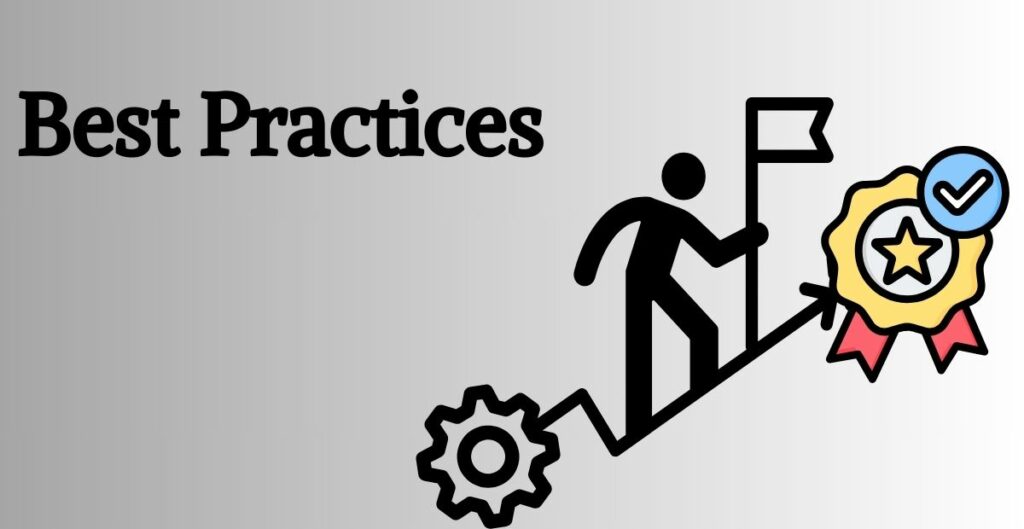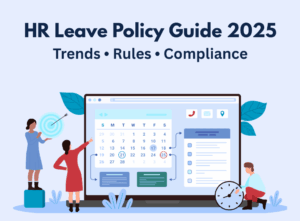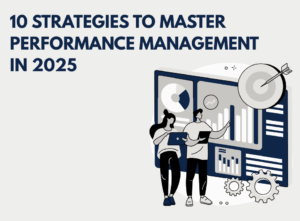Introduction to Self-Evaluation Performance Review
A remarkable shift is being observed in the modern workplace whereby traditional performance reviews are moving from predominance to more inclusive and employee-oriented reviews. The coming appearance of self-assessment performance reviews only illustrates the influence of such a transformation process. It gives the possibility for the employees to participate in the assessment of their performance.
The ratings are a sign of the new paradigm, an alternative strategic approach that brings to the floor the idea of a partnership between the historians and the learning audiences. Through the act of encouraging them to ponder the accomplishments they have made happening so far and the areas they still need to work on, organizations create a culture of accountability and self-awareness. This means that flexible and intensive learning together fosters stronger connections between workers and managers as well as creates an environment where employees are continually learning and developing ultimately.
The sequel paragraphs will discuss here the focal points for self-evaluation performance reviews which are appropriate in contemporary performance evaluation.
What is a Self Evaluation Performance Review?
Self-evaluation performance review is a technique through which employees evaluate their performance, contribution, strengths, and opportunities for improvement during a set period. Unlike continuous performance assessments that by and large are top-down procedures, the self-evaluation performance review is designed to help employees self-reflect on their work independently.
Importance of Self-Evaluation Performance Review Management
- Empowerment and Ownership: Through performance evaluation of employees, the enterprises made workers capable of setting their own goals and taking charge of the profession. This develops a feeling of responsibility towards work as well as independence in the staff, inducing involvement and increase in motivation among the employees.
- Enhanced Self-Awareness: Employees will develop the ability to evaluate themselves by setting the scope for their accomplishments, setbacks, and lessons. This exploration provides an opportunity to grow all the more insightful of oneself as it enables one to understand their strengths and shortcomings well.
- Facilitating Constructive Feedback: Self-evaluation performance reviews perform a unifying role in performance between employers and employees by providing a base for fruitful talks. Through addressing their performance, employees bring into light a total look at their performance, which in return, managers, will use to direct and refine the support and guidance that they give.
- Alignment of Goals: When they not only just get to know these goals but also provide information about how to achieve them, their performance becomes more effective. The congruent efforts of the employees for the cause of the organization as a whole lead to unity and coordination among the teams, resulting in lasting success.
- Continuous Learning and Development: Autotemplates induce a culture of life-long education and development. Through introspection on past moments of success and failure, team members isolate the potholes in their professional journey and see new ways whereupon they can grow and enhance themselves in the workplace, thus forming the solid groundwork for their ongoing success.
Benefits of Self-Evaluation Performance Reviews
Empowering Employees Through Self-Assessment
The 360-degree performance reviews, besides empowering employees to voice themselves in the evaluation process, will give rise to a sense of ownership and also give the employees the ability to take charge. By actively engaging in self-assessment, employees start to have an ownership of not only their performance but also their personal development and the career tracking strategy. Having control over the decisions they make develops an arena of responsibility and initiative, allowing persons to feel important and respected for their contributions. Not only that, self-assessment forces employees to look back at their career performance and detect the positive and negative aspects of it, which may lead to a higher level of self-awareness of employees and personal growth.
Improved Employee Engagement and Satisfaction
Meaningful involvement and appreciation of work are the essential pillars for employees to stay in a company and also a reliable way of sustaining the corporate organization. Employees’ auto-performance reviews are pivotal to adding both transparency and open dialogue to strengthen these abilities. When workers are allowed to express their views and perspectives related to the evaluation process, they tend to be more enthusiastic and involved in their daily duties. In addition to the role of self-assessment in developing employee skills, it also can build a sense of cooperation and partnership between employees and managers together with high job satisfaction and loyalty among the employees.
Aligning Individual Goals with Organizational Objectives
Among the many benefits self-evaluation performance reviews provide, is their capacity to bring the goals of individuals by the objectives of the organization. Through developing and maintaining employee understanding of the meaning of their achievements in connection with the company’s larger purpose organizations create a sense of mission and focus among the employees. When employees are aware of how their initiatives can influence this corporation’s overall favourable performance, everyone is more likely to work vigorously and as a team to meet the organizational goals. This alignment, through individual levels and all over the organization, not only improves work performance but also makes the organization more agile and effective.
Integration of Self-Evaluation Performance Review in HRMS Software
To be fully efficient, Human Resource Management Systems (HRMS) are the key that helps the HR department to cut labor time and bring employee performance to the top. The implementation of self-evaluation performance review capability into HRMS software leads to the elements with lots of advantages for companies who are attempting to make the methods of performance management near date. Let’s explore how HRMS software facilitates self-evaluation performance review processes and the key features to consider:
How HRMS Software Facilitates Self-Evaluation Performance Review Processes
- Centralized Platform: HRMS software creates one single point of entry thus enabling employees to fill in self-evaluation performance review forms, get guidelines, and eventually learn the deadlines. This will be useful in ensuring that there’s conformance as well as accessibility in every corner of the organization thus creating a process that is simple to all.
- Customizable Templates: The HRMS system made it possible to use customizable normative templates designed to assess performance development, by the set standard by the organizations concerned. These templates help employees find the proper format to reply constructively about their accomplishments, struggles, and targets.
- Automated Reminders: A Human Resources Management System (HRMS) solution raises the automatization level in self-evaluation by reminding and notifying employees of upcoming deadlines. It enables the on-schedule performance of the self-assessment and there will be no lag period in the initial performance review cycle.
Features to Look for in HRMS Software for Self-Evaluation Performance Review
- User-Friendly Interface: Experience functional and user-friendly HRMS software that guides employees in the filling of self-evaluation performance review forms and the giving of feedback.
- Flexibility and Customization: Search for HRMS software solutions that have been designed with the ability to allow flexibility in tailoring self-assessment templates according to the purpose, when proscribed performance criteria and different evaluation frameworks are considered.
- Reporting and Analytics: Choose HRMS software that has extensive reports and analysis functions to make it possible for Human resource (HR) staff to compare self-evaluation performance review data and spot patterns or points that need alignment.
Streamlining Self-Evaluation Performance Review Workflows
Automating Self-Assessment Performance Review Forms and Templates
- Customizable Templates: The use of HRMS software is the door for organizations to fashion self-assessment models in different ways with the common objective of specialized requirements of positions, departments, or assessments. These templates may have been parts for specifying goals, recording achievements, describing difficulties, and identifying fields for growth.
- Predefined Questions: To guarantee the accuracy of the process in assessing the self, the Human Resource Management System (HRMS) software allows Human Resource (HR) staff to create beforehand questions or prompts within the self-assessment forms. To be honest, these are the factors that help in directing the employees in the evaluation of their performance by perceiving the true input.
- Dynamic Forms: Recognized HRMS systems incorporate forms that allow evolving modifications according to the user’s input and conduct a real-time assessment process that is both personalized and interactive. Through the categories, workers can proceed based on their replies that way the whole process is simple and quick.
- Version Control: The latest version of HRMS software allows self-assessment forms to be maintained for version control, in a real-time fashion whereby changes and updates made by employees are tracked and monitored throughout the evaluation period. This brings efficiency to the process since teachers can track students’ development.
Setting up Reminders and Notifications for Self Evaluation Deadline
- Automated Reminders: The human resources management system automatically sends employees alerts that it is coming time to rate themselves. These can be configured as reminders to employees who can be delivered via emails, or mobile notifications, or those can be pushed within the HRMS platform itself.
- Customizable Notification Settings: Staff members when within the HRMS software, can choose notification preferences from their management panel, where they can specify the interval and message format for the reminder. This way employees are less likely to get overwhelmed with constant reminders as a notification system alone has limited capabilities.
- Escalation Procedures: In case of non-filing of the expected deadlines or incomplete self-assessments, HRMS software can set off an escalation procedure, which will notify managers or HR representatives to follow up with the employees and may provide them with assistance in need, if required.
- Deadline Tracking: It is the software that records completion deadlines for self-evaluation performance review and allows HR authorities to supervise the progress by identifying any delays or bottlenecks in the process of assessment. This enhancement of visibility permits respondents with their concerns to be addressed and their skills developed at the right time through proactive intervention.
Ensuring Fairness and Objectivity
Guidelines for Self-Evaluation Performance Review Criteria and Metrics
- Clear Performance Standards: HRMS software allows companies to formulate job appraisal criteria with determined goals for each work position or department. This criterion is the basis for the standards of self-evaluation performance review the linkage to organizational goals via its consistency.
- Objective Metrics: Set out a set of objective metrics and KPIs connected to the HRMS software that employees can use to assess their contribution against clear goals. These METICS may be SMART which is specific, measurable, achievable, relevant, and time-bound – the employees will be able to check their progress proceeding.
- Behavioural Competencies: Besides numerical indicators, the base also self-evaluates performance reviews on behavior trends and quality assessments. The usage of human resource management system software will continue to grow, especially with the introduction of this toolkit, which allows organizations to predefine competency frameworks or customize competency designs based on their values and culture.
Providing Support and Training for Employees on Self-assessment performance review
- Training Resources: Training resources are incorporated into the HRMS software, as well as tutorials which help the user understand the steps of self assessment process and go through with the functionality of the system in the most effective manner. Such training may comprise video tutorials, user guides, or adaptive modules that users could access via the HRMS portal.
- Guidance Documents: Support personnel with instructional materials that contain standard questions and issues associated with self-assessment, or create FAQs so employees can identify answers to these questions quickly. They should reveal the aim behind self-evaluation, help to understand the criteria for evaluation, and offer advice for giving structured feedback.
- Managerial Support: It is important to motivate managers to offer guidance and counselling to their subordinates during the time of joining the self-evaluation performance review process. The introduction of HRMS software will create opportunities for managers and employees to communicate, and this contact can be followed up with periodic meetings and dialogue sessions.
Leveraging Self-Evaluation Performance Review Data
Incorporating Self-Evaluation Performance Review Data Cycles
Data Integration: The HRMS software helps businesses to synch a self-evaluation performance review cycle without difficulties. Such integration implies that the self-assessment ratings and the feedback correlate with other performance factors so that the overall view of practical employee performance is comprehensive.
Calibration Sessions: In-house calibration sessions should be held with managers and HR professionals where performance appraisal data will be gone through to guarantee fairness and consistency. Serving as the single data source, this HR software does a great job displaying data in the form of visuals for analysis, benchmarking, and comparisons, with the conclusion being just a click away.
Performance Discussions: Leverage self-evaluation performance review data to utilize for the performance discussions between managers and employees during discussions. HRMS software is highly intuitive and self-assessment tools accompany the self-assessment / self-paper and ratings, providing a frame of reference for constructive dialogue.
Using Self-Evaluation Insights for Constructive Feedback and Development Plans
- Identifying Strengths and Areas for Improvement: Evaluate the self-assessment data to recognize the employee’s strengths, achievements, and where there needs to be room for improvement. Under the HRMS software, there are tools for report generating and analytics that can give a clear picture of the areas covered either by excellent employees or those that require support.
- Tailoring Feedback: Apply self-evaluation performance review knowledge to define feedback and coaching sessions, which should be personalized for every employee’s specific needs and desires. Instruction map in HRMS helps managers log sessions, monitor the evolution of progress, and make amendments to development plans on time.
- Professional Development: Employ self-assessment data to direct the creation of personalized professional development programs that accommodate different needs. HR management software provides the facilities to trace training programs, skill building, and career choices that are consistent with employees’ personal performance objectives. This serves the purpose of aligning development plans to the employee’s own internalized goals.
Best Practices for Conducting Self-Evaluation Performance Reviews
In the human resource function sphere, self-evaluation type performance reviews have been fast gaining importance. Here are some best practices for fostering a culture of openness, honesty, and ongoing self-reflection and improvement within the context of self-evaluation performance reviews:
Creating a Culture of Openness and Honesty Around Self-Assessments
- Transparent Communication: Encourage a candid and authentic level of communication concerning the aim and specific steps of the self-evaluation performance review interview. It would be particular to assure your employees that they are well appreciated and the feedback would be used for their performance evaluations and development planning.
- Lead by Example: Leaders and managers should serve others by taking a paramount position in initiating self-evaluation performance reviews. Sharing their sentiment by disclosing vulnerability and openness in their self-evaluations sparks a positive trend and, in turn, fosters a similar attitude toward feedback in employees.
- Feedback Culture: Nurture a culture that supports feedback that involves self-feedback as well as responding to the feedback given is valued and supported. Welcome employees to leave each other reviews of specific things to improve on and to provide constructive feedback, making a team culture that develops and grows together.
Encouraging Ongoing Self-Reflection and Improvement
- Regular Reflection Exercises: Promote employees’ commitment to a self-reflection process through the non-formal performance evaluation interactivity. Put suggestions or poses that trigger the employees to do self-evaluation performance reviews for targets, accomplishments, the problems encountered, and also the areas they can enhance.
- Goal Setting and Tracking: Help employees in making their goal–setting process by tracking ideas that inspire them to set self-reliant, attainable goals for themselves. Guarantee employees develop and modify their goals in a realistic manner which may happen several times in their career and when there is feedback received.
- Development Opportunities: Give the staff provision for educational growth along with skill improvement based on their feedback which they conducted the self-assessment tests. Let them assess themselves by providing opportunities such as training programs, workshops, mentoring, and coaching, which will be the tools for their growth.
